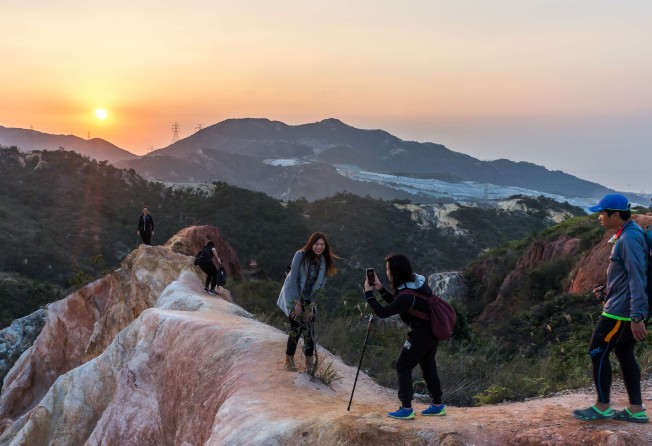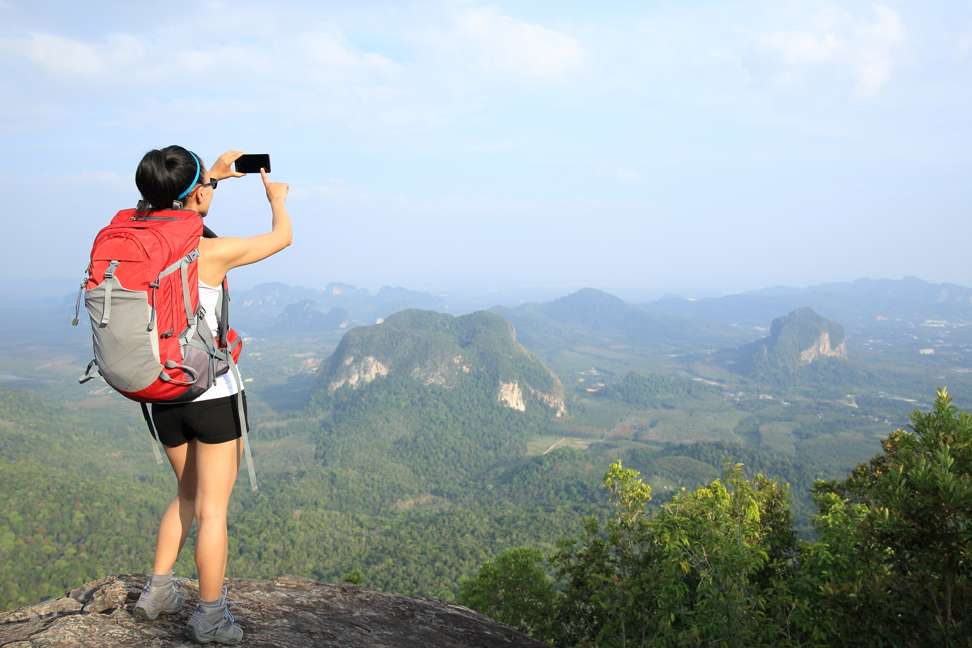How social media and lack of research have increased risks for Hong Kong hikers
Beware of solo hikes and a false sense of GPS-enabled bravado, as well as the need to bag bragging rights for that perfect outdoor picture

Hikers in Hong Kong are increasingly dicing with death by ignoring safety advice and embarking on trails despite being ill-prepared, experts warn.
According to statistics, the annual number of mountain rescues by the fire department increased from 138 in 2005 to 357 in 2016 – coinciding also with the growing number of hikers.
Data from the Agriculture, Fisheries and Conservation Department showed that country park visitors grew from 12.2 million in 2005/6 to 13.3 million in 2015/16. Before that, the increase was even more dramatic – from 2.7 million in 1977, to 8.8 million in 1987, following a push by the government to promote the benefits of hiking.
When approached by the South China Morning Post, both the police and the government said they did not keep records of how many people died or were seriously injured in country parks each year.
But based on previous reports, two hikers died while on a trail in the first two months of this year, and four perished in 2016.
Watch: Meet Hong Kong's mountain rescuers
Some courted danger by entering restricted areas, taking photos on cliff edges, or not having adequate amounts of food and water, while others ran into trouble while hiking alone.
On March 12 last year, a man in his 30s fell 400 metres to his death from Lion Rock after reportedly balancing precariously on a cliff edge while trying to take a photograph.
In November last year,a 60-year-old man collapsed and died on part of a steep, unpaved trail to Sharp Peak in Sai Kung, despite signs in the area telling hikers not to proceed.
Shum Si-ki, who founded the Hong Kong Hiking Meetup group in 2005, which now boasts more than 19,000 members, said GPS-enabled mobile phones gave some inexperienced hikers a false sense of confidence that they could “find their own way”.
He said that after Sars hit Hong Kong in 2003, more people turned to hiking to improve their health and get away from the cramped city, but that “increased the number of accidents”.
He also said he had seen young hikers taking bigger risks such as balancing precariously on cliff edges to obtain impressive photographs of their hikes for bragging rights on social media.
“Accidents mainly happen to solo hikers, you must at least pair up,” Shum added. “On our hikes, we always ask people to be careful when taking selfies. We remind people that you either hike or you stop to take photos.”
Hong Kong Hiking Meetup grades its hikes according to difficulty on a scale of one (easy) to five (extremely hard). The group offers about three hikes on weekdays and 12 on weekends.
Shum added that dehydration and the varying weather patterns were other major concerns for novice hikers.
“Especially in the summer, humidity is high and you find people are not prepared,” he said.
Meanwhile veteran mountaineer Chung Kin-man said hiking alone could be “fatally flawed”, as it would be difficult to get help in an emergency. He urged hikers to go with at least a group of four to five people.
Chung also said that although Hong Kong was generally a safe place to hike, not many people bothered to do their homework, such as checking the weather or route at least two days in advance.
“I have seen hikers wearing high heels, sandals and leather shoes,” he said. “No matter what kind of sport you are doing, you should wear sports shoes that can protect your feet.”
Chung added that hikers should plan an exit route on a trail in case of an emergency. “The phone signal can be very weak in the countryside,” he said. “Don’t depend on your phone. It does not always work.”
The Tourism Board also warned against solo hikes. On its website, it advised all hikers to gauge if their fitness levels were “appropriate for the route” and to “pay attention to weather conditions”, among other things.
But Pete Spurrier, author of three Hong Kong hiking guidebooks and owner of publishing house Blacksmith Books, admitted he thoroughly enjoyed solo hiking.
He said during a hike in 1994, just one year after arriving in Hong Kong, he was stranded in a remote area of the New Territories for more than two days after heavy rain made trails too treacherous.
Without a mobile phone, he could not call for help, and the nearby village on his map turned out to be abandoned. He camped out until it was safe to return home.
“Many of the disappearances have happened when people go out alone,” he said. “But I wouldn’t stand up and tell people they definitely shouldn’t do it, because I go alone. People go hiking for different reasons; the main thing is to have your wits about you.”
“I guess some people think Hong Kong is such a small place that they will not get lost,” he said. “But it can be scary if you find yourself in a deserted area far from a bus stop.”

Hiking Do’s and Don’ts:
Selfies are a good way to take a cute picture of yourself with a great backdrop, but they can also lead to injury – or even death – especially when you are navigating a treacherous trail or scaling a cliff. From the start of 2014 to September last year, 127 people around the world died while trying to take a selfie – more than the number of people who died in a shark attack, according to research from Carnegie Mellon University in the United States.
But there’s no need to throw away your selfie stick or quit hiking. Experts say the best way to keep safe is to be prepared, watch out for your surroundings, and always hike with others:
-Don’t stand at a cliff edge or climb onto rocks to take photos. Don’t venture onto untended paths, take shortcuts or ignore hazard signs. Exploring a new route could put you in danger.
-Check your surroundings before taking a photo, and make sure there aren’t any loose rocks or roots you could trip on. Using a self-timer means you don’t have to worry about reaching out to press the button – but the safest way is to get someone else to take the photo for you.
-Avoid walking on wet rocks or slippery surfaces, and stay away from steep slopes during or after heavy rain.
-Before you set off, make sure you check the weather forecast.
-Don’t hike alone. If someone is injured, one person should stay with the injured person while others seek help.
-Know your limits.
-Dress appropriately and bring supplies. You’ll need food, water, rain gear, a sun hat, and a mobile phone in your backpack. Wear shoes with grip so you don’t slip. Hong Kong Hikers director Steve Pheby says off-the-shelf fashionable sports shoes are often not made for the terrain and dirt on a hike.
-If you are lost, retrace your steps instead of pressing on further.
-Don’t eat wild fruits and mushrooms. Drinking untreated stream water can also be dangerous.
-Avoid smoking on the trail. If there is a bush fire, find a place with less vegetation to escape.
-In summer, drink enough water and stay out of the sun to avoid heat stroke. In colder months, bring warm and waterproof clothing to avoid hypothermia.
-Wear long pants and ankle boots and stay on the maintained paths to avoid snakes. If you see a snake, keep calm. If someone is bitten, take them to hospital as soon as possible and try to identify the snake to help doctors select the right antivenom.
Julia Hollingsworth
Source: Agriculture, Fisheries and Conservation Department, Hong Kong Hikers director Steve Pheby